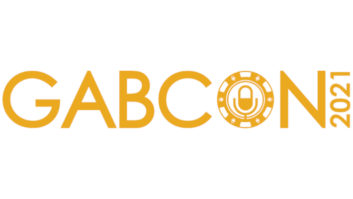This week’s IEEE Broadcast Technology Symposium featured a packed technical program, and Thursday’s sessions were no exception for the radio crowd.
The morning kicked off with sessions on AM and FM broadcasting, chaired by Beasley Broadcast Group Chief Technology Officer Mike Cooney.
First up was Stephen Lockwood of Hatfield & Dawson, who presented Ben Dawson’s paper on a “Three-Station Facility Exchange for Improved AM Service in Miami.” The consultants were tasked with getting the best coverage for WURN, WLVJ and WMYM, all owned by one broadcaster, while minimizing new tower construction and rule waivers. This was done over the course of three years and resulted in “one station that was tall, thin and blonde, and two others that weren’t too bad,” Lockwood said.
Next were Xperi’s Russ Mundschenk and Glynn Walden (retired from CBS Radio), who tag-teamed a presentation explaining “Allocation Evaluation for IBOC Power Increase.” Based on a test bed in the Northeast Corridor and other data, the two concluded about 60% of stations could increase power to -10 dBc, and a major limiting factor in IBOC coverage is the existing noise floor, among other findings.
Burk Technology Vice President/Chief Technology Officer Paul Shulins then shared an “Update to Bitrate Reduction Effects on Watermarking.” Shulins concluded that bitrate reduction does have an effect on PPM watermarking; voices seem to encode best at 23 kbps and the best results were found when the audio processor is placed before the PPM encoder in the air chain.
Shulins then moved on to his next role as chair for the sessions on “Using Drones for Broadcast Engineering and Production,” during which Cavell Mertz & Associates’ John Kean explained “Antenna Radiation Pattern Measurement with a Drone,” including some advantages and disadvantages of the methodology.
This was followed up by a presentation sharing “Real World Results for a Signal Measurement Drone” from Ian Gair of Australian company SixArms (named for hexacopters and the “airborne radio measurement systems” acronym).
And Cox Media Group’s Dave Sirak ended the morning with a session entitled “Close Encounters of the Drone Kind” (appropriately named for a presentation held the day before Friday the 13th!).
The annual BTS Awards Lunch featured a keynote presentation from Sally French, founder of The Drone Girl website, as well as a brief address from sponsor company DAC System SA, a Swiss transmission system monitoring services company.
At 2 p.m., the Broadcast Plant Technology sessions kicked off, chaired by NAB Senior Director of Engineering and Technology Policy Kelly Williams.
Xperi Vice President of Connected Radio Bob Dillon shared thoughts on the timely subject of “Metadata Generation and Distribution” and encouraged attendees to think globally, rather than geographically because metadata delivery systems have already begun to make this shift.
Wayne Pecena of Texas A&M University then spoke about “Cybersecurity and the Broadcast Technical Plant,” giving insight into station vulnerabilities and what broadcast engineers can do to increase security.












